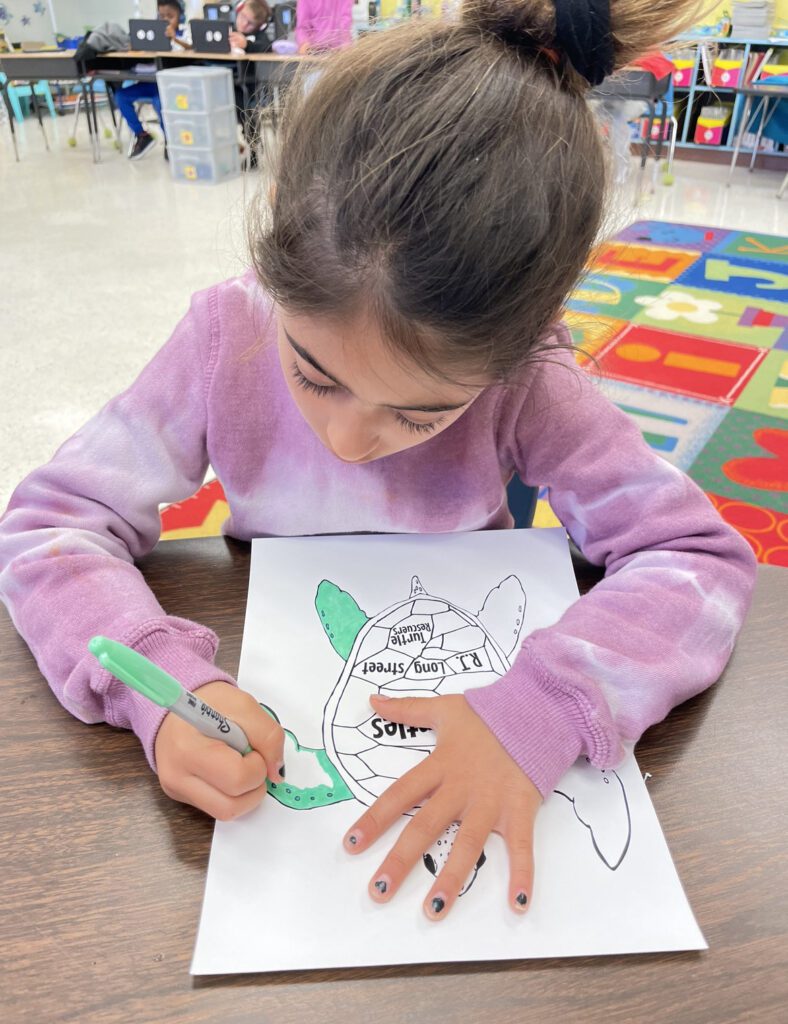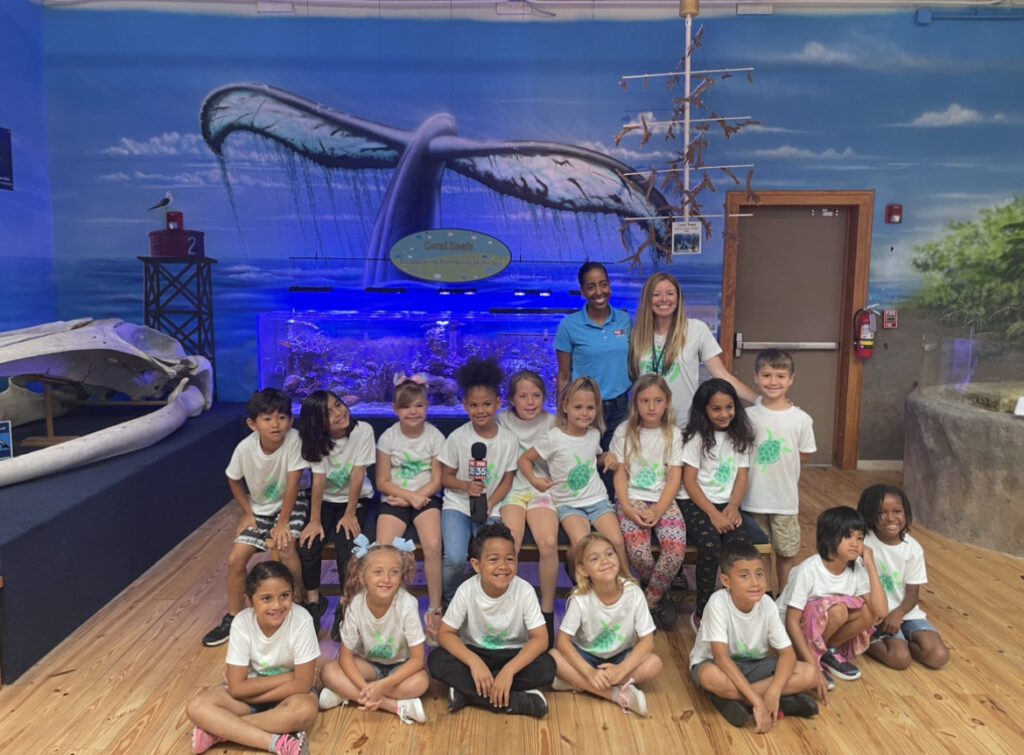
Experiential Learning
Experiential learning can be challenging to implement. There are, however, teachers who wouldn’t think of teaching any other way. Not only does this type of learning integrate across content areas, but it requires that students be engaged in activities that connect in-class learning to real world problems and solutions. Research supports the benefits of integration and confirms how experiential learning allows students to focus on issues that are authentic and important in their lives. It seems simple, but when students are able to relate school learning to real-life issues, academics and classroom dynamics improve: students are more focused and motivated as they clearly see a purpose to their learning.
Practicing What I Teach
After spending decades in experiential education, what I miss most is witnessing those “aha” moments when students transform from passive learners to active participants wanting to learn more and do all they can to make a difference. I, too, love learning about the world around me. Whenever I travel, I like to learn about the local wildlife, the environmental challenges they face, and the good people who rescue, rehabilitate and return wildlife to their natural habitat. As a former wildlife rehab volunteer, I value the work they do. As an educator, I’m also interested in how these organizations partner with schools and engage students.
On a recent visit to Florida, a friend and I kayaked the Indian River and explored the mangroves with expert guides from the Marine Discovery Center. We observed dolphins and shore birds, and learned of the alarming number of manatee deaths from starvation caused, in part, by the over-fertilization of lawns. From there, we were afforded a behind-the-scenes tour of The Marine Science Center (MSC) in Volusia County. The tour was led by Stephanie Harris, who has worked at the Center for many years in various roles. We heard about the Center’s expansion efforts and saw, firsthand, their work rehabilitating wildlife. We also learned of the Center’s outreach to schools and, in particular, of the collaboration with one very special first grade class at R.J. Longstreet School in Daytona Beach, Florida. The MSC and Ms. Carly Stasa’s students have proven how partnerships like theirs enhance teaching, enrich learning, and make a difference for local wildlife.
Experiential Learning in Action

Ms. Stasa has been a teacher for 17 years. She now works at the Daytona Beach school and has been partnering with MSC for 3 years. Her students are known far and wide as “The Turtle Rescuers.” Carly is extremely proud of her class and their work. She is convinced that giving her students a purpose for learning, and opportunities to show empathy for local wildlife, has forever changed them, the classroom dynamics and her way of teaching. “I see collaboration between my students within the classroom and even on the playground,” she said. “They are constantly trying to help each other out in all academic areas. I also saw my reading and math scores go above what they were predicted to be.”
Decades of research prove time and again how authentic, real-world learning transforms classrooms. Yet, teachers and schools rarely take advantage of partnerships that can actively support that transformation. In the Philadelphia area, alone, we have several zoos, incredible museums, wildlife rehabilitation centers, and a wealth of non-profit organizations ready to build deeper relationships with students and schools. Rather than the one-off field trip that has little impact on genuine learning, in-depth partnerships provide teachers and students with direct access to experts throughout the year. As such, students are immersed in the real world of science, given a purpose for learning, and discover ways in which they, themselves, can make a difference. As Ms. Stasa has witnessed, not only do academics improve, but the social-emotional benefits of environment-based, experiential learning allow young children to spend time outdoors in nature; something the experts agree is diminishing with each new generation.
Becoming a Turtle Rescuer
With math and reading taking up a good deal of class time, how does Ms. Stasa fit this project into her year? While she has the flexibility to bring in outside resources, she has to follow mandated academic standards in science. She explained to me how this project actually supports the science curriculum as the students learn about living things and their basic needs. Integration across content areas is seamless as this project not only supports science, but also language arts, math and social studies.
Ms. Stasa enjoys a wonderful reputation within the school community. Parents are thrilled when they learn their child will spend the year with her. Upon entering her classroom in the fall, students are aware they need to earn the title of “Turtle Rescuer” and must first complete required reading and math goals before this project begins, usually in March. Then, after doing their own, in-class, research, the students meet with MSC experts to get an up close look at the rehabilitation process that sea turtles go through. They learn that many of the hardships turtles face could have been prevented if humans simply threw their trash into a receptacle and not onto the beach.
To educate their community, the students maintain a website about their project. Last spring on Earth Day they witnessed the final phase in the rehabilitation process as they watched a turtle be released back into the ocean. And, to ensure success of future rescues, the students made and sold turtle key chains and turtle bracelets raising over $4,000.00 last year for the purchase of much-needed oxygen machines for turtles in various stages of rehabilitation. Chad Macfie, Manager of the MSC, is extremely grateful for the students’ commitment to this project. “Besides the amazing monetary donations, the Turtle Rescuers have made to the Friends of the Marine Science Center, they have taught our community the importance of passion and cause. Ms. Stasa has taught her students an important life lesson about conservation and building community support for turtles.”
Keep in mind, these students are just 6 and 7 years old.
A Case for School Choice
I believe in school choice: not because the choice is one of public vs private, but because the choice is one of how and what schools are teaching, and how parents should be able to choose the best learning environment for their child. Given the choice, I don’t know a parent who wouldn’t choose Ms. Stasa’s class and this school. The benefits are obvious, and all children should have access to this level of experiential learning.
For schools that believe these projects are impossible to carry out, look to Ms. Stasa and her students as an example of what can be done. Not only are these projects possible, they are critical in developing empathy in children, and they are a proven strategy for creating caring classroom communities in our schools. Ms. Stasa sums it all up nicely saying, “The impact I have seen over the years in my classroom is huge. After teaching all these years I have never seen classes bond together like I have seen since I have started this project. I will continue to do this as long as I am able to!”
To Ms. Stasa and her Turtle Rescuers – keep up the great work! The environment and the turtles thank you.
